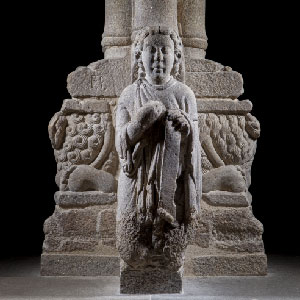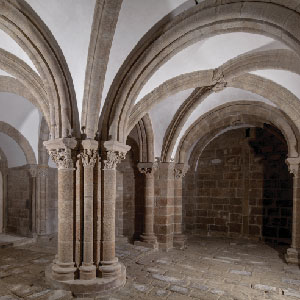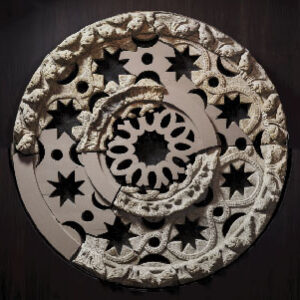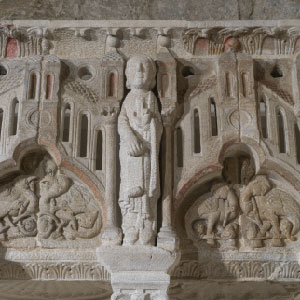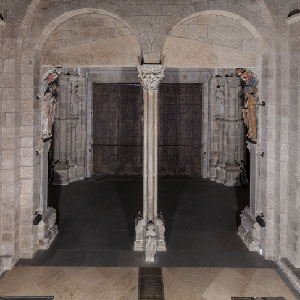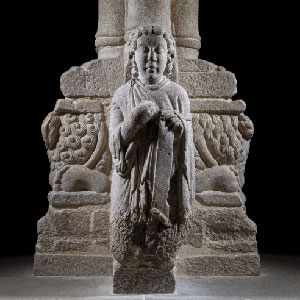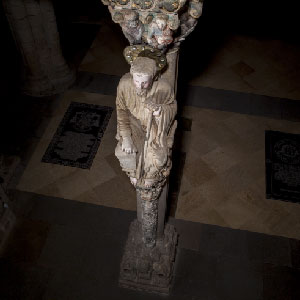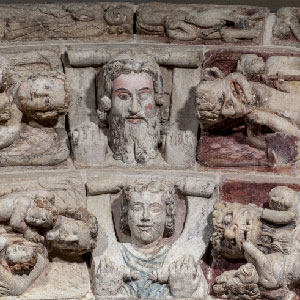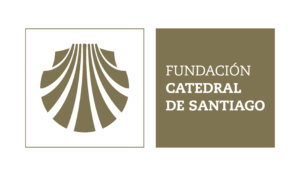
Welcome to the Portico of Glory
The Compostela Council of Canons and the Fundación Catedral welcome you to the Museum and they wish you enjoy the experience of learning about the history of the cathedral through its art collections. With the acquisition of this ticket, you are collaborating in the conservation, study and dissemination of the cultural heritage of the Cathedral of Santiago.
The Gelmírez Palace

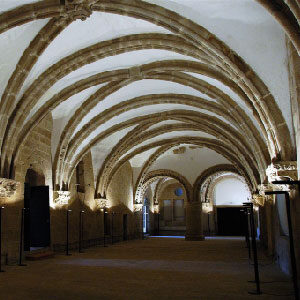

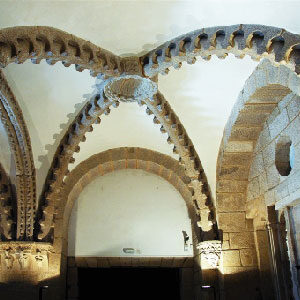
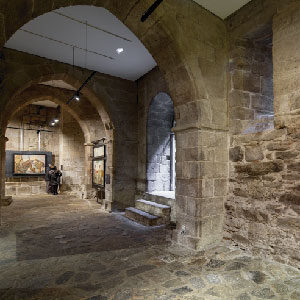
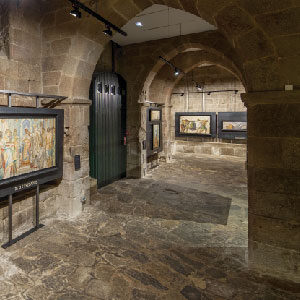
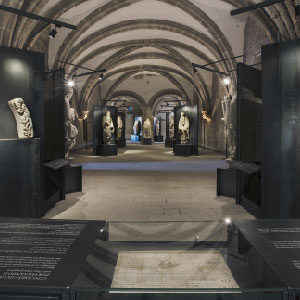

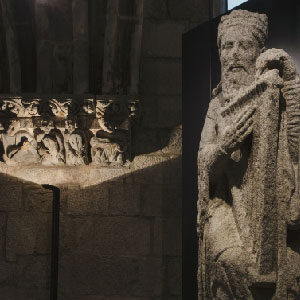
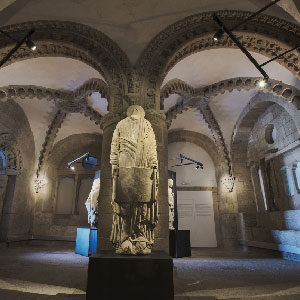
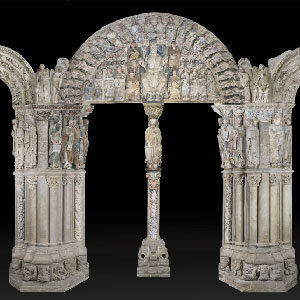
We are in the Gelmírez Palace, one of the most outstanding medieval civil buildings that have survived to this day and which was named after the first archbishop of Compostela, Diego Gelmírez…
We are in the Gelmírez Palace, one of the most outstanding medieval civil buildings that have survived to this day and which was named after the first archbishop of Compostela, Diego Gelmírez, a key figure in the history of the cathedral and the Jacobean tradition, who lived in the last years of the 11th century and the first half of the 12th century and who promoted its construction. However, the spaces of the building that we are going to visit barely preserve remains of the original construction and are the result of several reforms, mainly in the Gothic and in the Baroque.
From the Gelmírez Palace, today one of the locations of the Cathedral Museum, we are going to approach the work of Master Mateo, the most important artist of the cathedral, through a monographic space created in some of its rooms and we are going to access the Portico of Glory, a masterpiece of European medieval art. This interactive audio guide on your mobile device will serve as a guide during your journey and will offer you content and images on the different chapters of Master Mateo’s project in the cathedral, especially on the most important aspects of the Portico of Glory.
to consider
For security and conservation reasons, the capacity of the Portico of Glory is limited, as well as the maximum stay time. Please check at your entrance the scheduled time to visit the Portico and follow the instructions of the Museum staff and the information panels.
Don’t forget to connect your earphones and, if you don’t have any, ask for the available units in the Museum reception area.
Let’s begin…
What are you interested in knowing?
Master Mateo
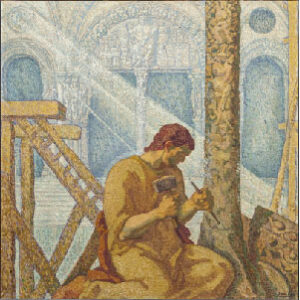

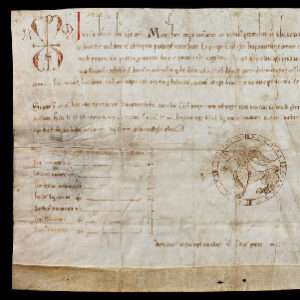

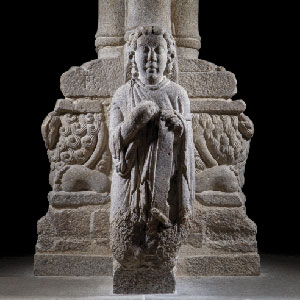
Despite the artistic relevance and the special significance for the Cathedral of Santiago and for the art of Galicia of the figure of Master Mateo, his origin, provenance and training remain largely unknown aspects…
Despite the artistic relevance and the special significance for the Cathedral of Santiago and for the art of Galicia of the figure of Master Mateo, his origin, provenance and training remain largely unknown aspects.
Only two contemporary direct references to Master Mateo are preserved, the first of which, dated February 23, 1168, serves to mark his presence in the cathedral and has the form of a privilege signed by King Ferdinand II, who granted him a life pension for the direction of the works in the cathedral.
The second reference appears in the commemorative inscription of the placement of the lintels on which the central tympanum of the Portico of Glory was built. As stated in the epigraph, they were placed on April 1, 1188, by Master Mateo, who directed the works “from the foundations”.
Master Mateo's project in the cathedral
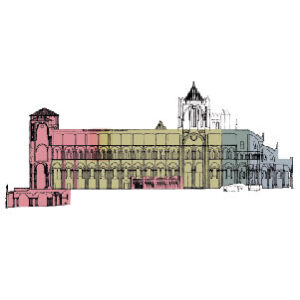
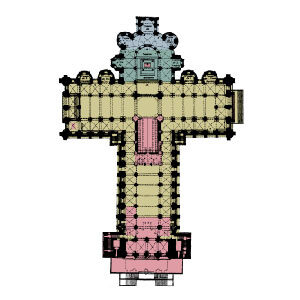
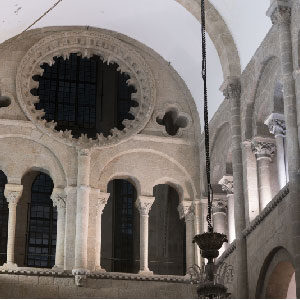

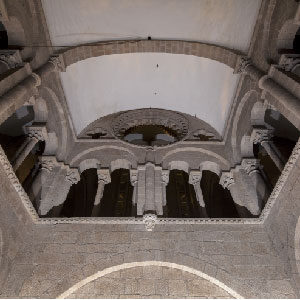
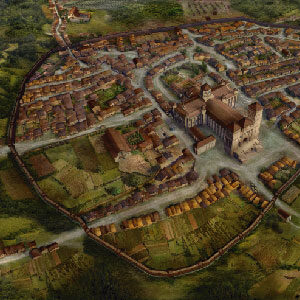
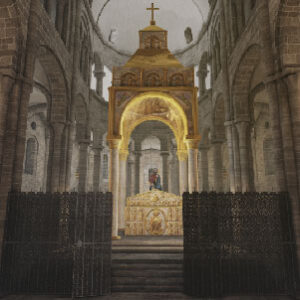
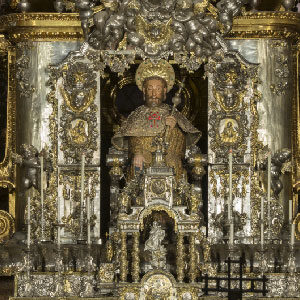
Between the years 1168 and 1211, approximately, Master Mateo directed an ambitious project in the cathedral of Santiago de Compostela, -its construction had begun towards the year 1075 at its eastern end-…
Between the years 1168 and 1211, approximately, Master Mateo directed an ambitious project in the cathedral of Santiago de Compostela, -its construction had begun towards the year 1075 at its eastern end-, which included the termination of the works and the spatial adaptation for the ceremonial purposes of a temple that at the same time was an apostolic sanctuary, a pilgrimage destination, an episcopal see and the reference cathedral of the Galician-Leonese monarchy, who strongly supported this project.
Master Mateo’s role in the cathedral project has varied throughout history; sometimes he has been considered an architect, other times a sculptor, or even both. Nowadays experts agree that he stood out for being a great artist in charge of an important workshop that carried out a key project for the cathedral under his commands.
Master Mateo’s project began with the termination of the last sections of the naves and the tribune, followed by the construction of the crypt and the Portico of Glory, opened to the outside by a monumental façade. It continued with the polychrome stone choir that was placed in the central nave completing the Portico’s discourse; and it finally culminated with other performances outside and inside the temple, including the placement of a seated image of Saint James the Greater on the main altar that became a point of reference for the faithful and the pilgrims.
The outer façade of the Portico of Glory
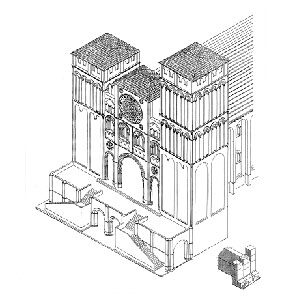
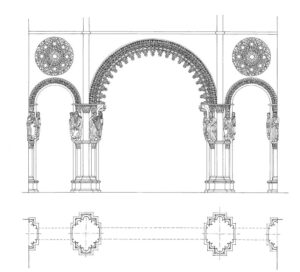

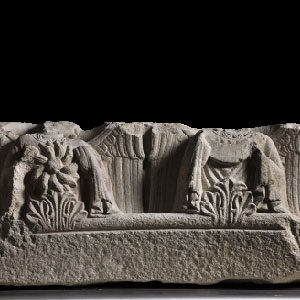

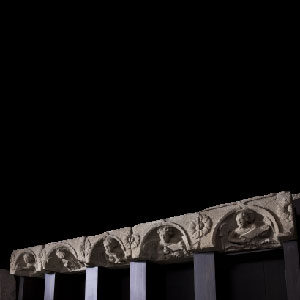
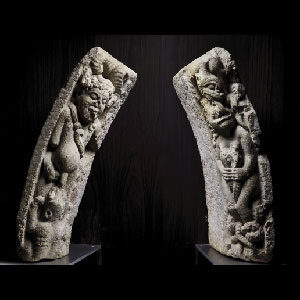
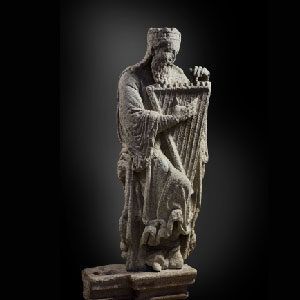
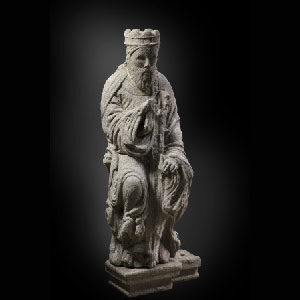
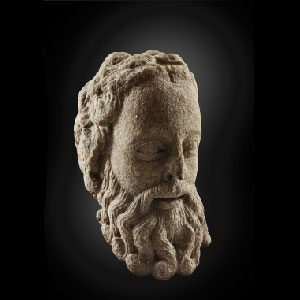
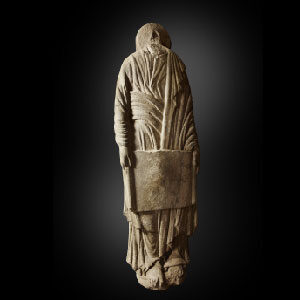
The ensemble of the Portico of Glory was completed with a façade that opened to the outside, to the current Obradoiro square, through a large central arch that had the same measurements of the tympanum of the portico, which could be seen from outside but protected by the space of the narthex, behind the aforementioned portico…
The ensemble of the Portico of Glory was completed with a façade that opened to the outside, to the current Obradoiro square, through a large central arch that had the same measurements of the tympanum of the portico, which could be seen from outside but protected by the space of the narthex, behind the aforementioned portico.
The façade by Master Mateo was first modified in the years 1520-1521, due to the decision of the Council of Canons to place doors to close the cathedral, which had always been open until then.
Later, between 1738 and 1750, the Baroque façade was created to replace the one by Mateo.
Important remains recovered from the missing façade by Master Mateo are exhibited in the Cathedral Museum. On the one hand, architectural elements from the façade, such as several fragments of the great central arch and its keystone with star-bearer angels, among them; one of the rose windows that provided light to the interior of the cathedral or a pair of keystones with the representation of the punishment of the lecherous that would be related to the door on the south side of the façade.
Likewise, part of its sculptural ensemble that completed the iconographic discourse of the Portico of Glory has been recovered. Some pieces are preserved today in other places; four of them are exhibited in this space: the images of the kings David and Solomon, a magnificent bearded head, and a column-statue of a male figure that displays a large cartouche and that is probably a representation of one of the minor prophets.
Based on all these materials and the structural study of the ensemble, several hypotheses have been proposed regarding the appearance of the façade, the placement of its elements, and the characters represented.
Master Mateo's stone choir
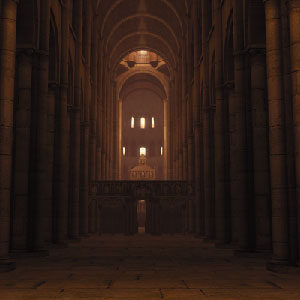


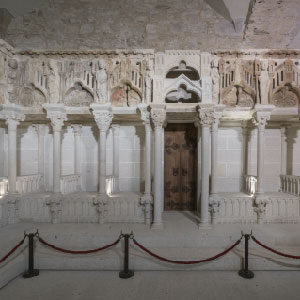
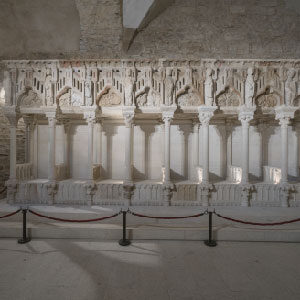

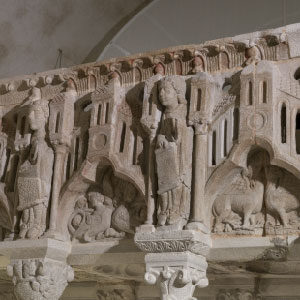
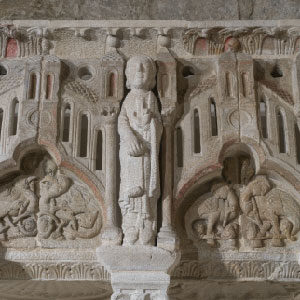
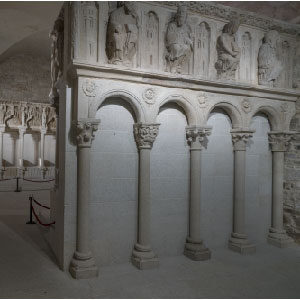
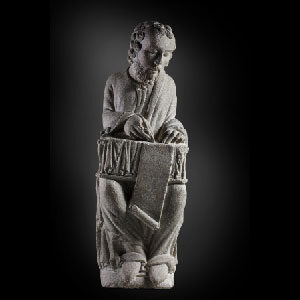


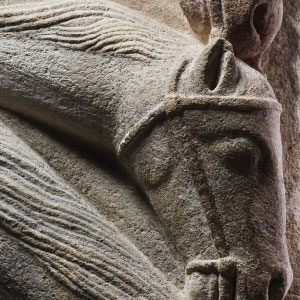
Master Mateo’s project also included the construction of a polychrome stone choir, which occupied the first sections of the nave. At the beginning of the 17th century, it was destroyed and replaced by a new wooden choir, which was also removed in the mid-twentieth century…
Master Mateo’s project also included the construction of a polychrome stone choir, which occupied the first sections of the nave. At the beginning of the 17th century, it was destroyed and replaced by a new wooden choir, which was also removed in the mid-twentieth century.
Important elements have also been recovered from Master Mateo’s stone choir, which are mainly preserved in the Cathedral Museum, where a partial hypothetical reconstruction of the choir is exhibited, as well as other pieces that show the greatness of a choir that was described, shortly after its destruction, as “the most beautiful old choir in Spain”.
Only the canons of the cathedral could access the interior of the choir and, for this reason, the iconographic program developed in its reliefs, mainly located in the crest that finished off the seating, was complex and exclusive for them. In addition, the program developed on the walls and the façade of the retrochoir, focused on the heavenly Jerusalem that the Apocalypse describes, followed and complemented the discourse of the Portico of Glory.
The Portico of Glory as sacred space
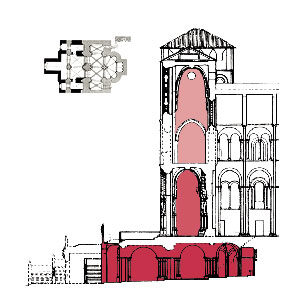


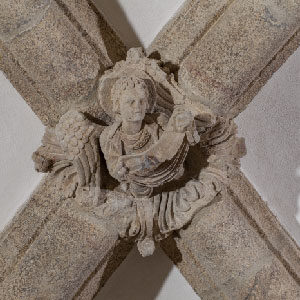
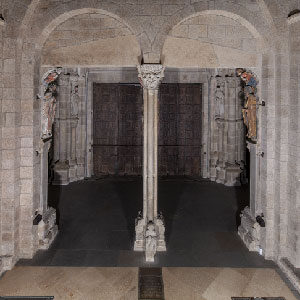
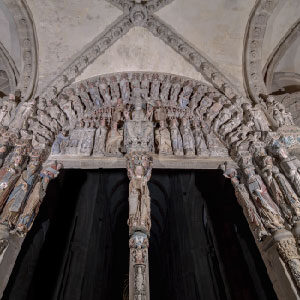
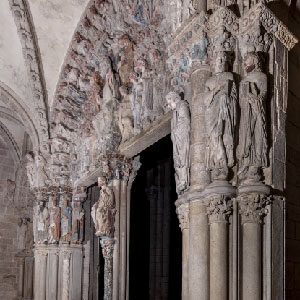
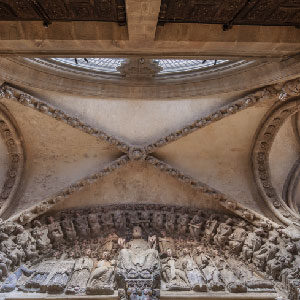
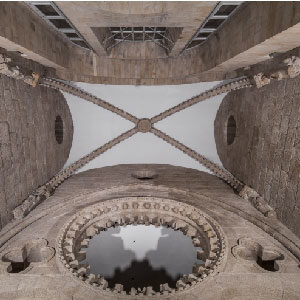
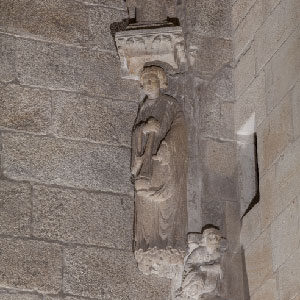

With the construction of the Portico of Glory, Master Mateo completed the western enclosure of the Romanesque cathedral and, at the same time, created a sacred space, with its own personality, inside the Jacobean basilica, organized into three levels above ground…
With the construction of the Portico of Glory, Master Mateo completed the western enclosure of the Romanesque cathedral and, at the same time, created a sacred space, with its own personality, inside the Jacobean basilica, organized into three levels above ground.
The lower level is the Crypt, which represents the earthly world and, therefore, in need of the stars to be illuminated. This explains the angels that carry the sun and the moon represented in the keystones of the vaults of the Crypt and that can also be seen in the great central arch of the outer façade.
The main part of the iconographic program of the Portico of Glory, with apocalyptic and salvific content, takes place in the narthex. On the one hand, the triple arcade with a representation in the lateral arches of the Old and the New Covenant through sculptures and reliefs, following the Holy Scriptures; and the Glory, after the second coming of Christ, in the central arch.
This triple arcade is completed with the counterfaçade, where the program continues to be developed, as a sort of stage in which a liturgical drama is represented, in polychrome stone, according to the usual models of the time, mainly the Ordo Prophetarum, whose text helps identify many of the sculpted characters. Likewise, the sacred space was extended to the outside through a façade in which the protagonists followed each other and, at the same time, illuminated the interior with great scenography, causing the illusion that the figures could come to life at certain times.
Finally, according to the narrative of the Apocalypse, a relief that remained constantly illuminated, as indicated by Saint John in the description of the Celestial Jerusalem, whose “Light is the Lamb”, is completed in the tribune with the Lamb of God, adored by angels with censers.
Therefore, the Portico of Glory is much more than an entrance to the cathedral; It is a unique space in which the faithful had a spiritual experience and where solemn representations and ceremonies would take place on certain occasions.
The Portico of Glory
Where do we start?
The Foundations and the first order of columns

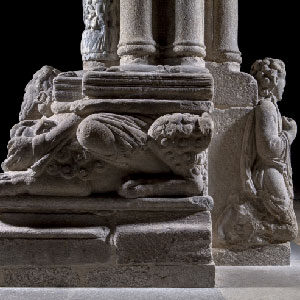

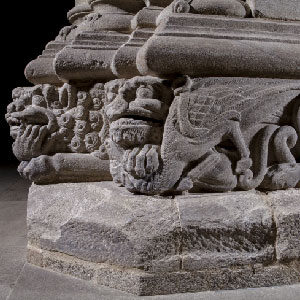


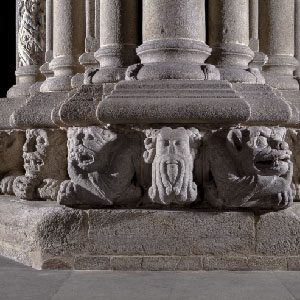




In the Portico of Glory, Master Mateo modified the architectural model used in the rest of the Romanesque cathedral, which is clear from the very foundations of the ensemble. In them, he added between the plinth…
In the Portico of Glory, Master Mateo modified the architectural model used in the rest of the Romanesque cathedral, which is clear from the very foundations of the ensemble. In them, he added between the plinth and the bases an intermediate body decorated with real and fantastic animals, extracted from the medieval bestiary. The most common interpretation is that they would symbolize the negative aspects of the earthly world, oppressed under the Glory of God.
Among all the characters represented, the one in the mullion stands out, where a bearded male figure appears astride over two lions that he holds and opens their jaws with his hands. A model that, although simplified, can also be seen in the foundations at the ends of the Portico.
This scene is located in a prominent place and offers support to the great pillar on which the central tympanum is set and in which a program focused on the human and divine genealogy of Christ is developed upwards. It has had many interpretations: Samson, Adam, and even Gilgamesh. However, it is likely related to the story described in the Book of Daniel and to the passage of the lions’ den.
The other scenes would be related to the episode of the four beasts in the same book; except one in the right pillar of the central arch where the punishment of King Nebuchadnezzar of Babylon is represented.
The ascent to Glory begins on the foundations through a lower-body of columns, all smooth and made of granite, except for three of them – in addition to the one in the mullion – which are covered in reliefs carved in marble. The first two located on each side have a helical decoration that follows the organization of the arcades, on the left with themes related to the Old Covenant and on the right with themes related to the Last Judgment. The third column, located on the right pillar of the left arch, has different characteristics, with several figures among abundant branches and vegetation.
Santo dos Croques

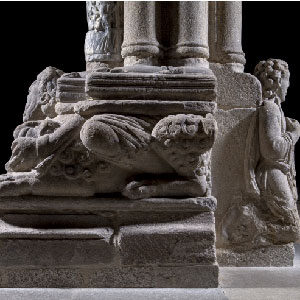
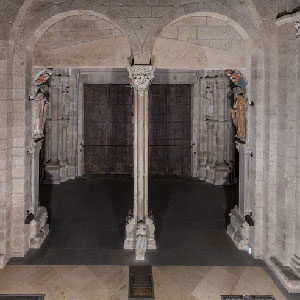
The name Santo dos croques –head bumps, in Galician- refers to the infamous kneeling male figure with curly hair located on the back of the base of the mullion column of the Portico of Glory, facing the altar and offering the Apostle Saint James his masterpiece…
The name Santo dos croques –head bumps, in Galician- refers to the infamous kneeling male figure with curly hair located on the back of the base of the mullion column of the Portico of Glory, facing the altar and offering the Apostle Saint James his masterpiece.
He has his right hand on his chest and with the left hand he unfolds a large cartouche, now erased, in which the word “architectus” could be read, which would be completed with the “fec (it)” that can be seen on one side of the foundation.
Tradition and various studies coincide in pointing out that this figure would correspond to the idealized self-portrait of Master Mateo, represented as the paradigm of the “intellectual artist”. This implies an exceptional fact at his time and proves the special consideration that Master Mateo had, whose image would end up being venerated as Santo dos croques.
It was the custom of the people of Compostela and visitors, and hence its name, to bring their head closer to that of the Santo dos croques so that he would transmit his wisdom, a rite that has had to be discontinued for conservation reasons.
The mullion

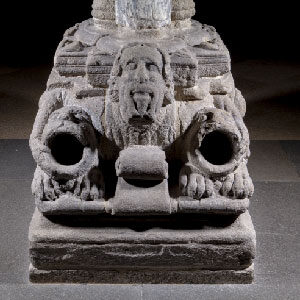
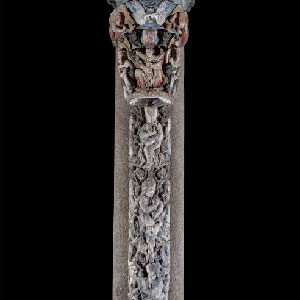
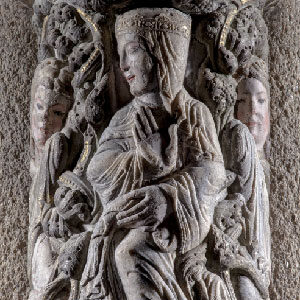
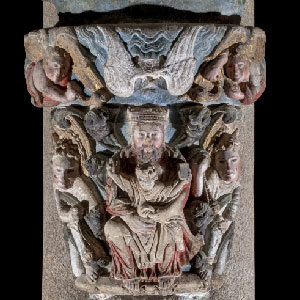
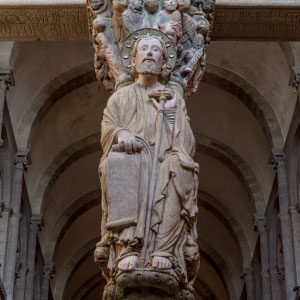
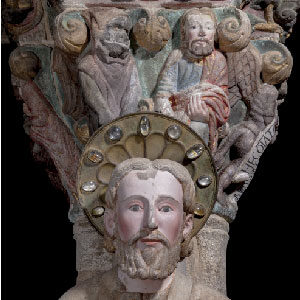
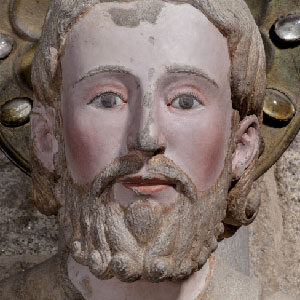
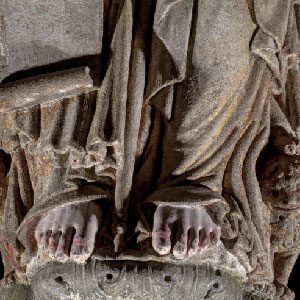
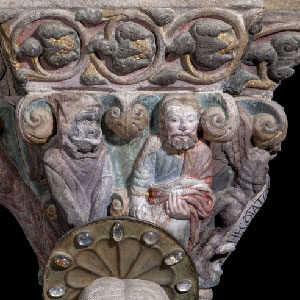
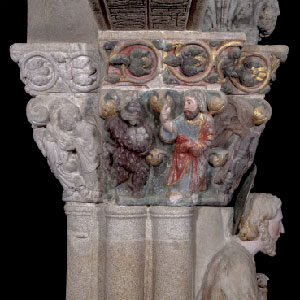
The mullion offers support to the lintels of the central tympanum of the Portico and is located in a place of special prominence within the ensemble. It is formed by a large granite block from which a bundle of stylized columns emerges…
The mullion offers support to the lintels of the central tympanum of the Portico and is located in a place of special prominence within the ensemble. It is formed by a large granite block from which a bundle of stylized columns emerges.
The shaft of the central column is made of marble and it represents, in relief, the human genealogy of Christ, from Jesse, who is the character that appears lying at the bottom and whose chest is connected to the branches of the tree, up to the Virgin Mary, who finishes off the upper part.
Immediately after, the divine nature of Christ is represented on the capital of the Trinity; he is represented as the Child who is sitting on the lap of his Father, enthroned, blessing with one hand and carrying the Book of the Law in the other hand.
The figure of the Apostle Saint James plays a significant role due to its location in the upper part of the mullion, on the aforementioned capital. He is represented sitting on a throne, with the tau-shaped staff, and a large cartouche that recalls the apostolic mission of Saint James the Greater in these lands. With this image, Master Mateo reinforces the intercessory character of the apostle, who receives the faithful at the doors of his cathedral and will help them achieve the Glory as a reward for their pilgrimage. In addition, with this piece he introduces an iconographic model that had great subsequent development and that, a short time later, Mateo himself had reused in the seated image that presides the main altar of the cathedral since 1211.
The mullion ensemble is finished off with a large capital in which, with a special narrative sense, from left to right, the unsuccessful attempts of the devil to tempt Christ are represented; the triumphal image of Christ stands immediately after, presiding the great tympanum.
The column-statues

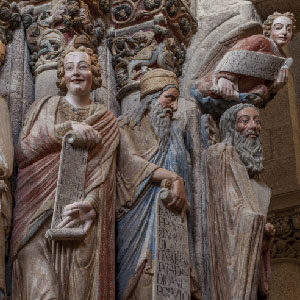
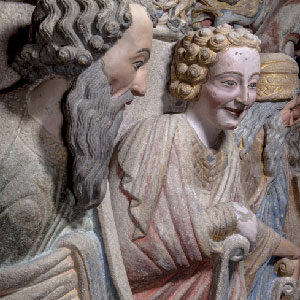
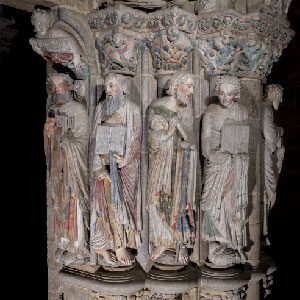
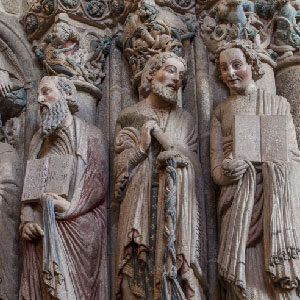
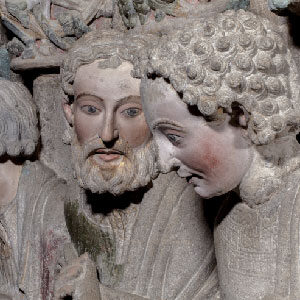


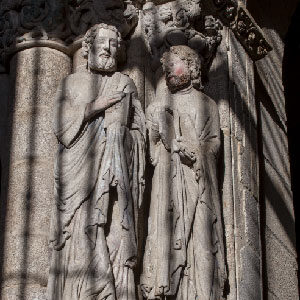
The change in the architectural model of Master Mateo in the Portico of Glory allowed him to use two orders of columns and, in the upper one, the incorporation of a new artistic contribution with the use of the column-statues, unknown until then in the Hispanic art…
The change in the architectural model of Master Mateo in the Portico of Glory allowed him to use two orders of columns and, in the upper one, the incorporation of a new artistic contribution with the use of the column-statues, unknown until then in the Hispanic art.
This allowed Master Mateo to expand the characters represented and the iconographic discourse, while defining the scenographic sense of the Portico of Glory, through the dialogues, gestures and looks that are established among the figures, of an absolutely unprecedented naturalism in the Galicia of the time.
Considering the organization of the arcades of the Portico of Glory, it seems clear that, on the left side, figures from the Old Testament would be represented, and on the right side, figures from the New Testament, a sequence that would extend to the ends of the counterfaçade. However, since the content of the cartouches that most of the figures carry has been lost and since they do not have any defining attributes, it is difficult to firmly determine the identity of each of them, except in specific examples.
This is the case of the images located on the lateral pillars of the central arch, where Moses, Isaiah, Daniel, with his legendary smile, appear on the left side; and Jeremiah, identified by his cartouches also accompanied by the text that an angel located in the relief holds: “The prophets preached that the Saviour would be born of the Virgin Mary.”
On the other hand, in the pillar on the right side, in clear correspondence with the opposite images, we can find the apostles Peter, Paul, Saint James, who appears a second time in the Portico; and John; accompanied by an angel in the relief carrying the inscription: “These are the winners, they were chosen as friends of God.”
Regarding the other column-statues, located on the pillars of the lateral arches, the figures can have different possible identifications, with the prophets Habakkuk, Ezekiel, Malachi, and Hosea on the left side. On the right side, the sequence of apostles would continue with Andrew, Saint James the Less, Philip, and Thomas.
The arch on the left

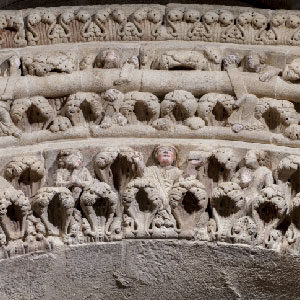
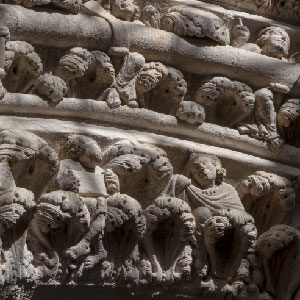


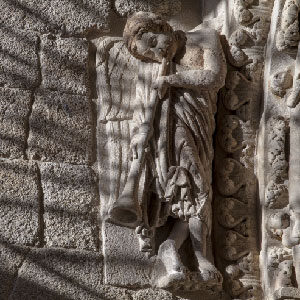
Less polychromy has been preserved in the arch on the left compared to other areas of the Portico, despite the fact that, structurally, it is in better conservation conditions than the one on the right. This is due to an intentional removal, as has been verified in the restoration of the complex.
Less polychromy has been preserved in the arch on the left compared to other areas of the Portico, despite the fact that, structurally, it is in better conservation conditions than the one on the right. This is due to an intentional removal, as has been verified in the restoration of the complex.
The interpretation of the two archivolts that make up the arch, completed by a third band with plant decoration, has given rise to many hypotheses, always related to the People of Israel and, therefore, to the Old Testament and the future of the people chosen before the birth of Jesus.
In the upper archivolt, a series of figures are imprisoned by a wide torus that runs through the central part of the piece, possibly representing the patriarchs of the tribes of Israel, subject to the law of Moses.
In the lower archivolt, Master Mateo recovered a theme specific to Byzantine art, extracted from one of the apocryphal gospels, the anastasis, that is the descent of Christ to limbo, before his resurrection, to save the righteous, who are pictured as children, crowned and helped by angels on their way to the Glory, represented in the central arch.
The arch on the right
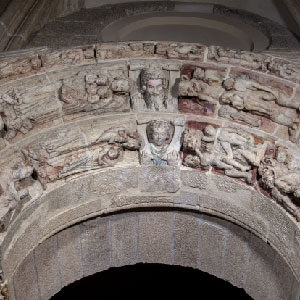
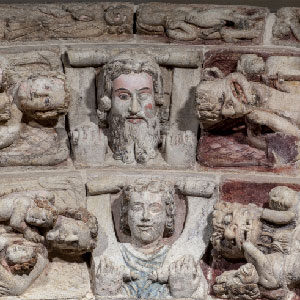
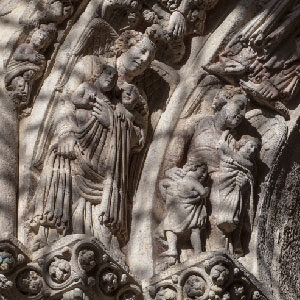
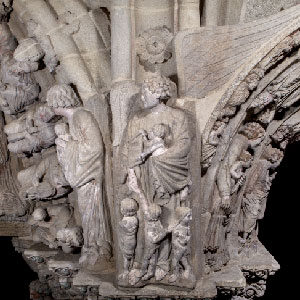
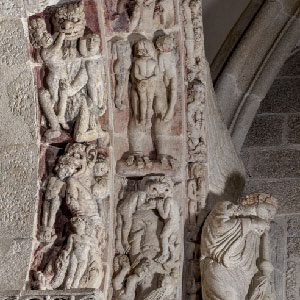
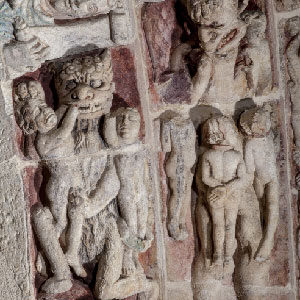
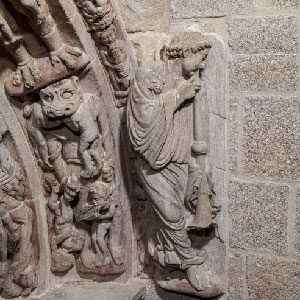
The arch on the right is organized into two archivolts and a third band, showing figures of angels adapted to its shape and dimensions…
The arch on the right is organized into two archivolts and a third band, showing figures of angels adapted to its shape and dimensions.
The Last Judgment is represented in both archivolts, with the heads of Christ in the upper one; and Saint Michael in the lower one, occupying its keystones and at the same time separating with his hands the blessed from the damned, who appear represented on both sides of the arch, by means of the cartouches that he displays upwards.
Thus, on the left, we can see a succession of children who are organized in groups and led by angels to the Glory of the central arch. They are the blessed who will inherit the Kingdom of God and who sing a new song before Him, according to the apocalyptic narrative.
Whereas, on the other side, demons with monstrous faces strive to punish the condemned for their sins. These scenes are reproduced with great crudeness and an evident moralizing and exemplary sense that would certainly have had a great impact on the medieval spectator.
The central arch and the tympanum
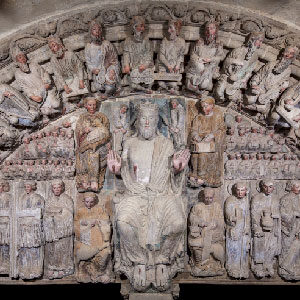
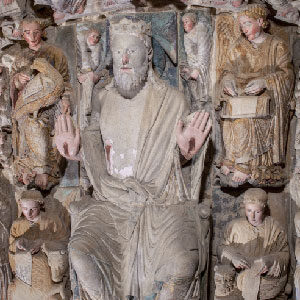
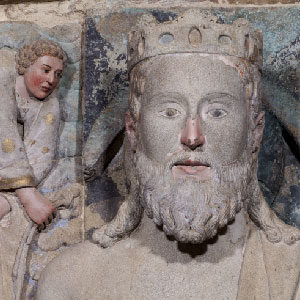
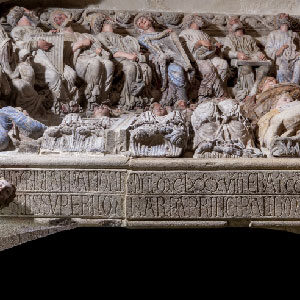

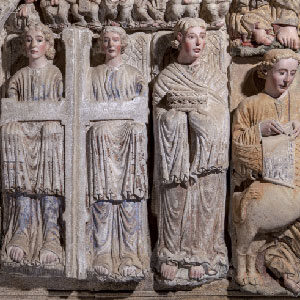
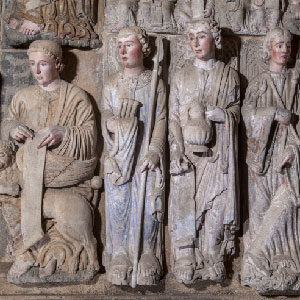
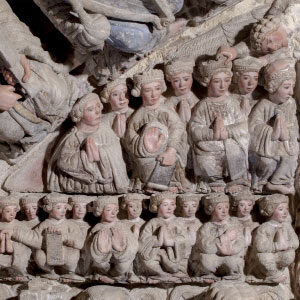
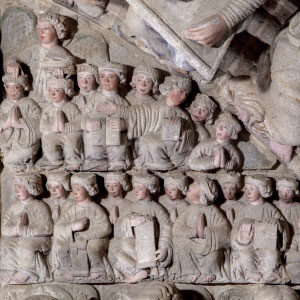

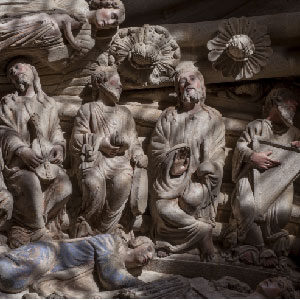
The iconographic program developed by Master Mateo in the Portico of Glory culminates in the great central arch and its tympanum, presided by the image of Christ in Majesty, triumphant over death and redeemer of men…
The iconographic program developed by Master Mateo in the Portico of Glory culminates in the great central arch and its tympanum, presided by the image of Christ in Majesty, triumphant over death and redeemer of men. Due to the use of the hierarchical perspective, the image has a size considerably larger than the rest. He is on a throne, which is set on two lions, he shows the wounds caused during his martyrdom and is accompanied by the four evangelists and their respective symbols, following the story of the Apocalypse.
In the lower part of the tympanum, the inscription of its lintels can be observed, in which it is stated that they were placed on April 1, 1188, by Master Mateo, who directed the works “from the foundations”. The procession of the Arma Christi is on the lintels, with a series of angels represented, with great ceremonial sense following the liturgy of the Compostela cathedral, carrying the instruments used in the Passion of Christ.
The rest of the tympanum is occupied on both sides by figures of crowned children with an attitude of prayer. Following the apocalyptic narrative, the images of the Righteous and the Blessed who, with the angels’ help, have reached the Glory from the lateral arches of the Portico of Glory can also be found.
Finally, in the archivolt, the twenty-four elders described by Saint John in the Apocalypse, are prepared to perform their heavenly music with the instruments they are finishing tuning. In addition to the symbolism contained in these images and their instruments, the careful accuracy of their representation stands out. Through reproductions and investigations, it has allowed the recovery of music from the time of the Portico of Glory.
The counterfaçade
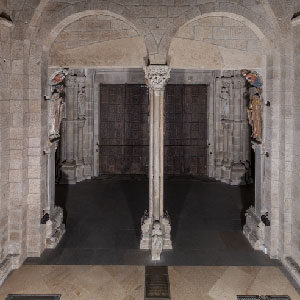
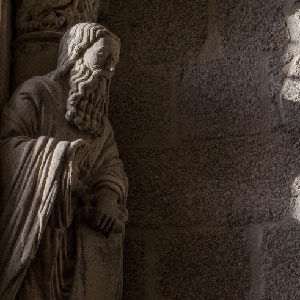
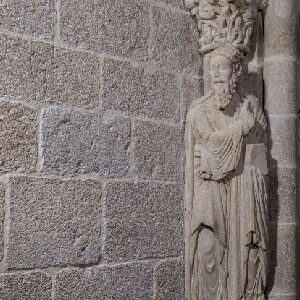
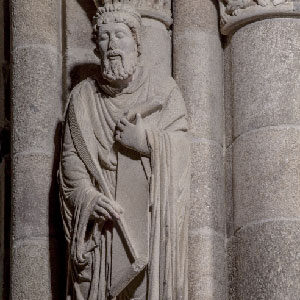
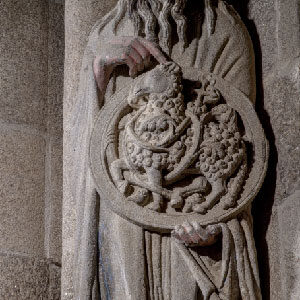
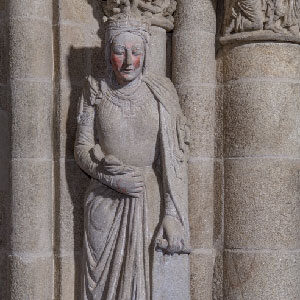

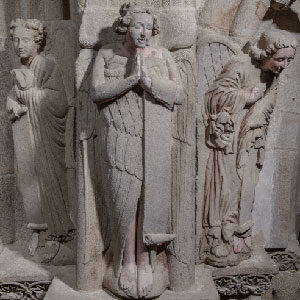


The Portico of Glory is a hierotopy, a sacred space with its own personality and it originally had specific uses that conditioned the iconographic program, the accesses, the communication with the rest of the temple, and so on…
The Portico of Glory is a hierotopy, a sacred space with its own personality and it originally had specific uses that conditioned the iconographic program, the accesses, the communication with the rest of the temple, and so on.
The same structure of the Portico is followed in the counterfaçade, thus helping to set this sacred space. It was first altered with the reform of the portico towards 1520 and, later, in the middle of the 18th century, with the replacement of the façade by Mateo by the new Obradoiro façade. Nevertheless, it is still related in looks, gestures and attitudes with the main scene, which unfolds in front of it and, in particular, with the central tympanum.
In the column-statues at its ends, the sequence of the pillars of the Portico continues, with the probable representation of the prophet Balaam on the right and with Jude Thaddeus on the left. The rest of the characters, with a precursor sense of the main scene of the tympanum, would correspond with the procession of the prophets of the Ordo Prophetarum, a medieval liturgical drama that was especially spread in the cathedrals of the time. Among them it can be found, from left to right, the poet Virgil, John the Baptist, the Queen of Sheba, and the Erythraean Sibyl.
On the aforementioned column statues, at the stem of the arches, a succession of angels and seraphs, which differ from the first ones by having three pairs of wings instead of one, carry long cartouches, now erased, and have an attitude of worship towards the image of Christ in Majesty that presides the tympanum in front of them.
The restoration of the Portico os Glory
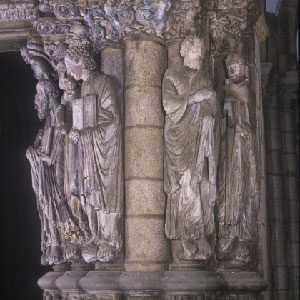
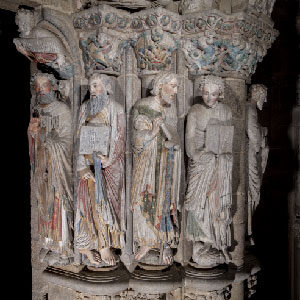
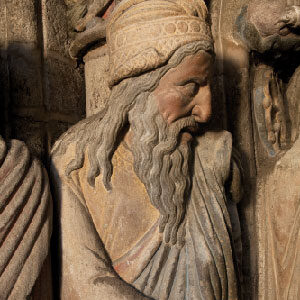

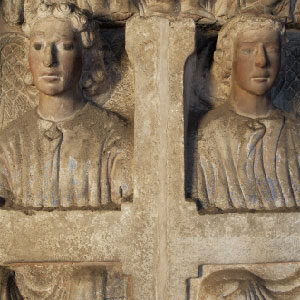
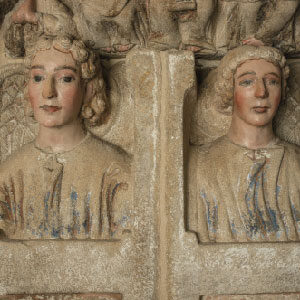


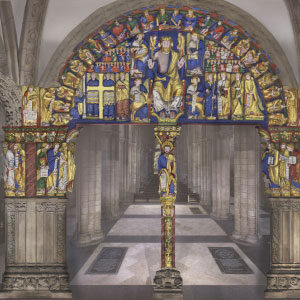
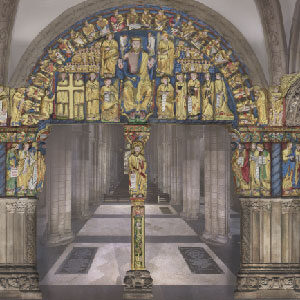
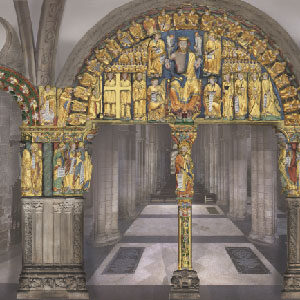

Between 2008 and 2018, the Portico of Glory underwent a deep and complex restoration that was sponsored by the Fundación Barrié and was led by the Fundación Catedral and the Spanish Cultural Heritage Institute.
Between 2008 and 2018, the Portico of Glory underwent a deep and complex restoration that was sponsored by the Fundación Barrié and was led by the Fundación Catedral and the Spanish Cultural Heritage Institute.
After a phase of previous studies on the state of conservation and causes of the deterioration of the work, some interventions on the ensemble mainly focused on two aspects were developed. One of them was the repair of filtrations of damp and condensation problems in the Portico of Glory and the second was the recovery of the polychromy that was preserved under dust and dirt. In this way, a masterpiece of medieval art has been saved, and it has recovered part of its splendour.
As a result of the restoration, it has been possible to virtually rebuild the three complete layers that were applied in the work, the original one in the times of Master Mateo; the second in the first decades of the 16th century; and the third in the early 17th century. Along with them, there seem to have been other partial interventions, such as the one carried out in the incarnations by the painter Crispín de Evelino in 1651.
All these layers are present in the current vision of the Portico of Glory, which offers an unprecedented panorama, like a kaleidoscope, in which vestiges of the transformations that the Portico experienced throughout history through polychromy are shown.

- Promotes: Fundación Catedral de Santiago
- Management and content: Ramón Yzquierdo Peiró
- Photography: Photographic archive of the Fundación Catedral de Santiago
- Design: Sotronic Innovation Technology S.L.
- Music: Resonet – Música Antiga. (Management: Fernando Reyes)
Partial or total reproduction of the contents and images is prohibited without the authorization of the Fundación Catedral de Santiago. All rights reserved.
The restoration of the Portico of Glory has been possible thanks to the patronage of the Barrie Foundation
